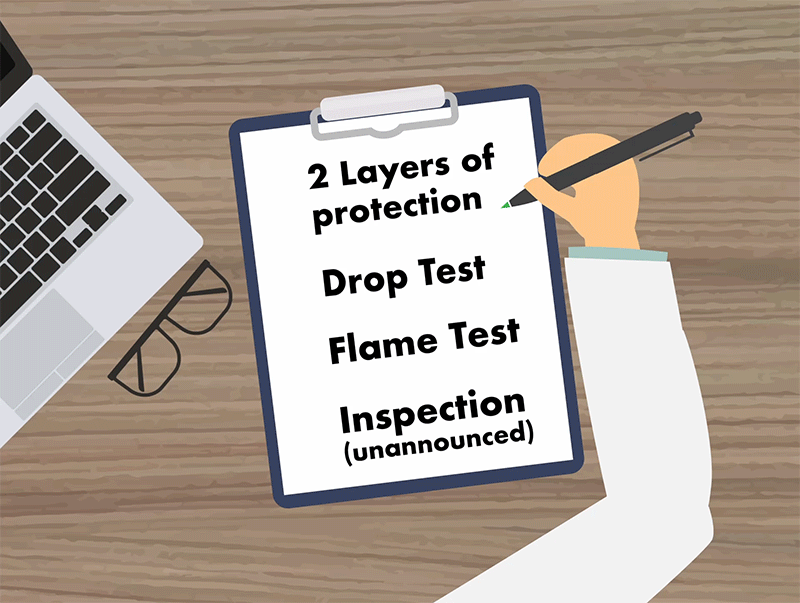
Buy Only Safety-Tested Chargers And Here’s Why
Third in a Series
Third in a Series
Buying a charger only on price is a dangerous proposition. A charger may be a small device but inside is a multifaceted and intricate electronic design that packs a lot of power.
Charger safety begins with the construction and design of its battery and PCBA (printed circuitboard assembly). For example, in a quality charger, the PCBA has two layers of protection for added safety so if one layer fails, a second one takes over. One of the safety tests chargers undergo involves trying to fail the first layer to see if the second layer will protect it. These don’t fail very often but if they do, you’ll be glad you have a backup to protect your device and you. Chargers without a second protection layer will not pass a safety certification test.
High-quality plastic housing is another sign of a safe device. In one of the safety tests, the charger is dropped from a distance onto concrete to make sure the housing doesn’t shatter. A third test is to use an open flame on the housing to ensure it has a high flammability rating and it will not catch fire.
When comparing chargers, look for those with batteries that are UL 1642-certified. This indicates they’ve passed multiple rigorous safety tests, including those for overheating. (For more on the importance ofUL 1642-certified batteries, read the first article in this series.)
The only way to know if a charger you are considering is as good on the inside as it looks on the outside is to buy those that have been tested and certified by a recognized organization.
In the U.S., the testing organization is UL, in Canada it’s CSA, and their inspectors make unannounced visits to PowerStick’s factory four times a year to confirm we are using the right components, UL-certified batteries and the original PCBA. We are not allowed to alter the PCBA or battery—they are very strict about that. Inspectors walk through our factory, ask what we are working on and check their records to make sure the charger is certified. Then they take it apart for inspection. They will check the batteries to make sure the right part number is printed on the battery and check the PCBA to make sure all the part numbers are accurate. This ensures that manufacturers don’t replace approved components with cheaper alternatives.
These inspectors are so strict that they even check our instruments for making those PCBAs to ensure they are calibrated annually and accurately.
The quality components, tests and certifications add to the price of a charger. Be wary of chargers costing less than $10 retail or $7 wholesale because you can be assured that they have not been adequately tested and are neither safe nor reliable.
Most distributors now understand the problems and dangers associated with cheap and unreliable chargers but some are still buying only on price. Don’t be that person. If one of those chargers catches fire or someone gets injured, everyone up and down the chain, including the distributor, is liable—except the manufacturer in China who is long gone.
Safety doesn’t come free—it’s expensive but it’s what you need to sleep at night.
See all stories in this series here.
– Dr. John Zhu
PowerStick has been designing and manufacturing portable power chargers at its Canadian manufacturing plant for over 10 years. During that time, this product category has been the focus of much publicity around safety and compliance. Some extreme cases involving batteries have caused fires in chargers and phones and prompted airlines to treat their conveyance with an abundance of caution.
As distributors and their representatives field more and more requests from their clients for portable charging devices, and in an effort to demystify battery and charger safety, we have asked Dr. John Zhu to pen a series of short, easy-to-understand tutorials to explain the how-tos and safety aspects of responsibly buying and selling these convenient and popular tech products. Learn More>











